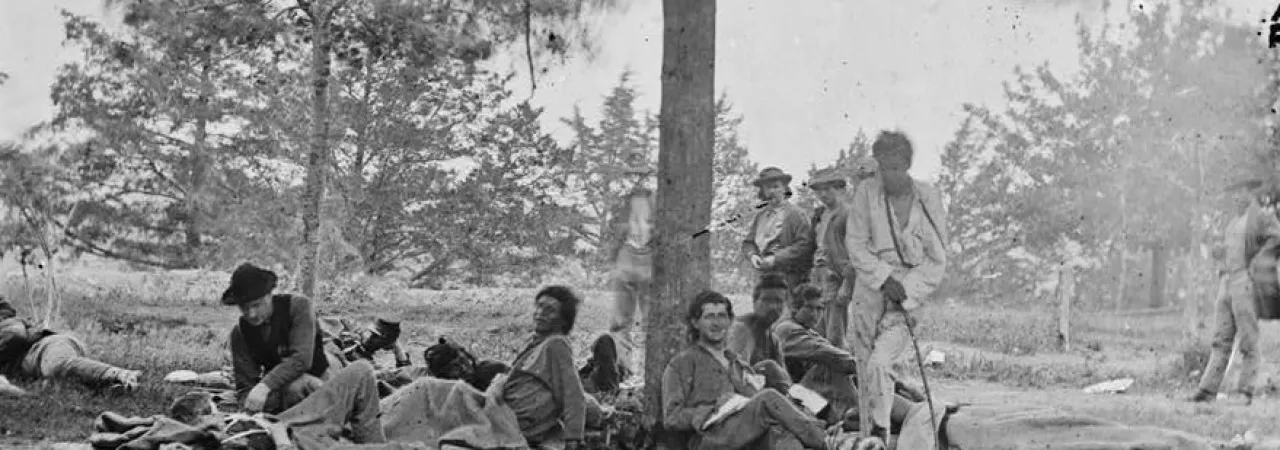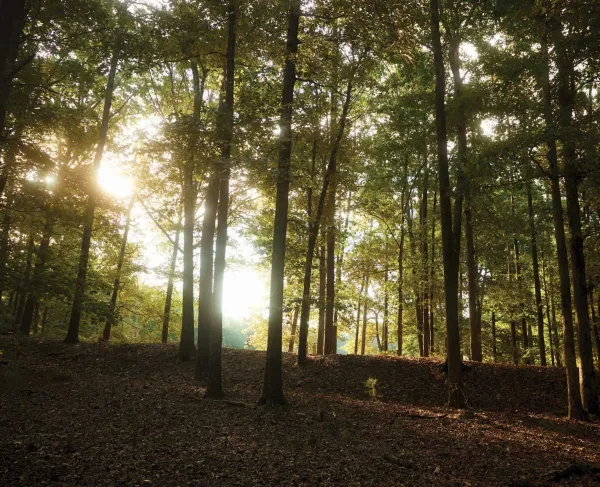
It was 1861 when Michigan’s legislature dismissed the idea of George Copway — a popular Methodist minister and Chippewa — to recruit a regiment of Great Lakes Native Americans who he claimed were “inured to hardships, fleet as deer, shrewd, and cautious.” However, much had changed in the span of two years, including the imposition of a federally imposed draft, quotas to be filled by each state, and the already-spilt blood of thousands of Michiganders. As such, Michigan began to seek out Native American soldiers to support the Union war efforts.
Col. Charles V. DeLand, a veteran of the 9th Michigan Infantry, and a troop of eager recruiters were particularly interested in finding stealthy men with acute marksmanship to join a regiment of sharpshooters — particularly, in Company K of the 1st Michigan Sharpshooters. But these recruits needed an incentive, like the promise of payment, meals, and the possibility of negotiating the protection of their traditional homelands from outsider incursion.
In a time when Native Americans feared losing their homes, military service spurred a glimmer of hope. Saginaw Chippewa Chief Nockkechickfawme gave the young men of his tribe even more motivation when he sharply warned of a Confederate overtaking where “there will be no protection for us; we shall be driven from our homes, our lands, and the graves of our friends.” Ottawa Chief Pawbawme drew from his fellow chief’s influence, sparking the enlistment of approximately two dozen more men with his fiery oration.
Upon their departure by steamer, the Ottawa-Ojibwa men were seen off by a great majority of their community. Among these departing warriors was Antoine Scott, who would later be recommended twice for the Medal of Honor but would never be awarded the great recognition. Another was Thomas Kechittigo — known to many as “Big Tom” — who had originally been refused enlistment in 1861 but would climb the ranks to become a sergeant in Company K. Recruits came from Oceana County, Bear River, Little Traverse, Charlevoix, La Croix and near Saginaw.
Of those who drove enlistments, a shining star was Second Lieut. Garrett A. Graveraet. A young man of only 23, the multi-talented Graveraet became an officer and led an impressive recruitment drive to strengthen the ranks of Company K. He even signed up his own father, the 55-year-old Henry Graveraet, who shaved off 10 years from his true age during enlistment and was the company’s only non-native soldier.

Following recruitment, the men of Company K were met with vigorous training. So, while veteran Colonel DeLand and part of the Michigan regiment sought out the Confederate raider John Hunt Morgan in Indiana, Graveraet — along with Capt. Edwin V. Andress and First Lieut. William Driggs — drilled the recruits of the new company into shape. They were so effective that upon DeLand’s return, mustering officer Lieut. Col. John R. Smith noted that the recruits were “the stuff, no doubt, of which good sharpshooters can easily be made.” And these native troops were promised the same benefits as white soldiers, such as $13 pay a month — outweighing the $10 monthly pay that U.S. Colored Troops (USCTs) received until equal pay was mandated.
Despite that difference, those in Company K began their wartime service by defending military storehouses and guarding Confederate prisoners — a path reflective of many USCTs’ entry into military service. Ordered to guard prisoners of war at Camp Douglas outside Chicago, the company experienced the bitter taste of camp life, as they faced not only boredom but also disease and desertion. Additionally, fellow soldiers and Chicago civilians were fascinated by the culture that accompanied Company K.
It wasn’t until March 8, 1864, that orders came in, directing the 1st Michigan Sharpshooters to Annapolis, Maryland, where they would rendezvous with Maj. Gen. Ambrose Burnside’s IX Corps of the Army of the Potomac. Arriving as Lieut. Gen. U.S. Grant started upon the Overland Campaign, the sturdy soldiers of Company K were inserted into the whirlwind of battle.
Their first foray into combat came with the Battle of the Wilderness on May 6, 1864, when the native soldiers engaged with Confederate forces south of Saunders’ Field. They used the brush and mud of their surroundings to camouflage their uniforms and, with an acute aptitude for sharpshooting and skirmishing, dove into battle with great determination. Mortally wounded in the fighting, Sergeant Charles Allen was the first casualty of war to come out of Company K.
However, the dark side of war only intensified for Company K, as days later — on May 12, 1864 — they were attacked by North Carolinians under Brig. Gen. James H. Lane during the Battle of Spotsylvania Court House. Ten more of the company’s men were lost as a result of the fighting.
By June 17, 1864, the Army of the Potomac had moved south of the James River and Company K was again swept into combat when the 1st Michigan were included in Brig. Gen. Orlando Willcox’s poorly executed attack on a Confederate salient around Petersburg, Virginia. While the sharpshooters obtained possession of Confederate breastworks, they were also isolated and soon-to-be surrounded by enemy forces under Brig. Gen. Matthew Ransom. The already dissipated native soldiers battled on, engaging in hand-to-hand combat that covered the retreat of their fellow soldiers, but were ultimately overwhelmed by the Confederates. Company K suffered two casualties from the incident, including Oliver Arpetargezhik and the young, bright Lieutenant Graveraet. The young Graveraet fell only days after the combat death of the elder Graveraet.
However, the impact of the June 17 fighting brought about a fate worse than death for more than 80 soldiers from the 1st Michigan, including 14 men from Company K, who were captured by the enemy. Prisoners of war, these soldiers were sent to the notorious Andersonville Prison, where about 50% of these men didn't make it out alive.
For those who avoided Andersonville, the following month was full of picketing, sniping, and digging, and overall unsavory conditions around Petersburg. But despite the monotony, the native sharpshooters didn’t fail to impress their fellow soldiers. There was a certain instance in which Lieut. Freeman S. Bowley witnessed the sharpshooters intently watch a mile-far chimney for hours, waiting for the enemy force to show themselves. When it seemed like no development was in sight, a sudden shot was fired and a Confederate was seen falling from the chimney, after exposing a portion of his body.
By the end of July 1864, the Union Army was hell-bent on breaking the stalemate in Petersburg and devised a plan to dig a lengthy tunnel under the Confederate defenses, and then fill this space with explosives. On July 30, the Federals detonated the mine, blowing a gap in the Confederate defenses. The 2nd Brigade from Brigadier General Willcox’s division, which included the 1st Michigan, was the third unit to charge into the crater. There, they encountered masses of dazed and confused Federals, many of whom failed to reach enemy lines. They also came across Confederates who, after regrouping, fought back.
On the far left of the Federal charge, the native sharpshooters had gained a foothold on the Confederate defenses, but the circumstances prevented them from overcoming enemy forces. As those opposing soldiers rained fire into the crater, the Native American forces remained composed and determined amidst an impossible situation.
Accounts of the 1st Michigan’s actions at the Battle of the Crater are far and few between, but the regiment’s current-day historian successfully put the puzzle pieces together to understand its final actions at the fateful site. As Federal forces attempted to retreat, sharpshooters — including Sidney Haight, Charles Thatcher, and Company K’s Pvt. Antoine Scott — covered their comrades. Scott was among the last to remove himself from the chaos and was recommended twice for the Medal of Honor for his astounding bravery, but the Chippewa soldier passed in 1878 and never received recognition. At the Crater, it is estimated that Company K lost three men in battle, plus one wounded and six captured. In total, the 1st Michigan lost approximately 45 soldiers in the assault.
Following the immense devastation of the Crater, Company K’s native sharpshooters were present at the battles of Reams Station, Peebles’ Farm and — in the final year of the Civil War — Hatcher’s Run and final operations around Petersburg. Throughout the course of the conflict, about 150 native soldiers served in Company K.
Related Battles
8,150
3,236
17,000
13,000





